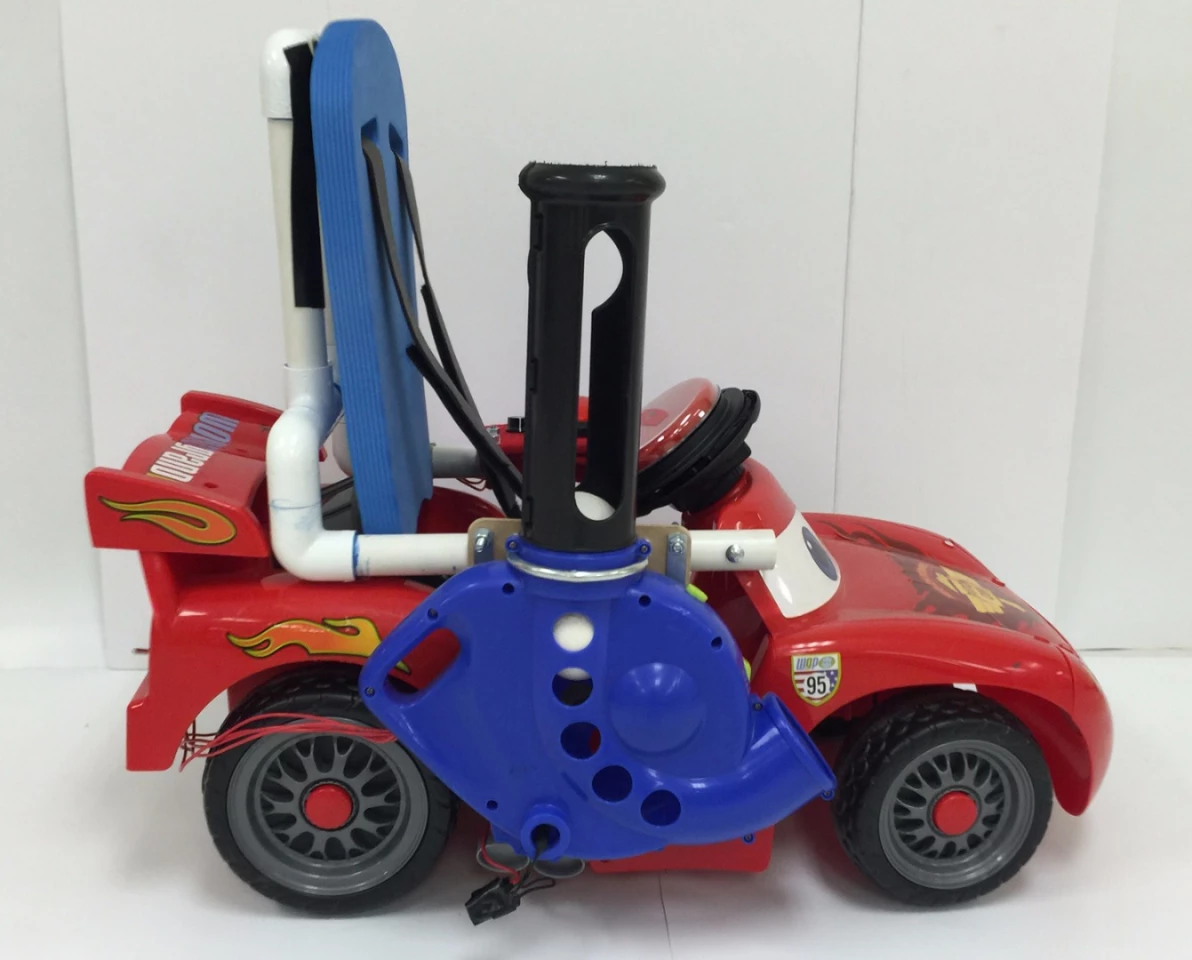Researchers from Oregon State University have revealed two new additions to a host of ride-on toy car designs produced by the Go Baby Go program, a national, community-based research, design and outreach project started in 2012 by Cole Galloway at the University of Delaware. One battery-powered mover encourages late bloomers to rise up and take charge, while the other gets kids in on the throwing game action.
Though older children with disabilities can get around in powered wheelchairs, options for under 2 year-olds are limited. Which is where the Go Baby Go program comes in, modifying off-the-shelf battery-powered toy cars for use by toddlers without needing to fork out the thousands of dollars it costs to buy a powered wheelchair. In fact, the toy car mods can generally be rolled out for around US$200.
The latest additions build on previous designs to help encourage independent play and exploration, and to get young children with disabilities to move and interact with others.
The sit-to-stand car is a reworked version on the original Go Baby Go design, and was developed for youngsters who haven't quite got the hang of bipedal movement, but are expected to walk on their own in time.
To get drivers up on their feet, bear weight and achieve balance, the researchers moved the switch that makes the car move from the ATV-style car's steering wheel/handlebars to the seat. The default – or seated – mode is off, so users would need to stand to activate the drive mechanism.
"This car gets you up and gets you moving," remarked leader of Oregon State's Go Baby Go program Sam Logan. "It's also a way to introduce some fun around the practice of these skills that will help a child stand and walk on their own."
The researchers found that users of this car spent around 10 percent more time interacting with schoolmates compared to when using crutches to get around.

The Throw Baby Throw car uses a battery-operated, switch-activated pitching machine made by Fisher Price to launch foam balls in the air, modified to activate when a large momentary switch is pushed. A potentiometer was also included to vary the launch speed. It was developed to help kids with limited upper limb movement to join in with throwing games and activities.
"With the switch, kids with upper-extremity limits can throw the same as other kids," Logan explained. "The design is really about facilitating this interaction with other kids. You also need someone to catch, retrieve or dodge the balls being thrown."
This mobility aid has yet to be studied at length – only one car is currently in the wild (well, Portland) – and will likely need more refinement before being released into the Go Baby Go network.
Both toy car mods feature in a technical report recently published in the journal Frontiers in Robotics and AI, while the sit-to-stand car was the subject of a study published in Pediatric Physical Therapy.
The video below outlines the Go Baby Go program and the development of the two new additions.
Source: Oregon State University





